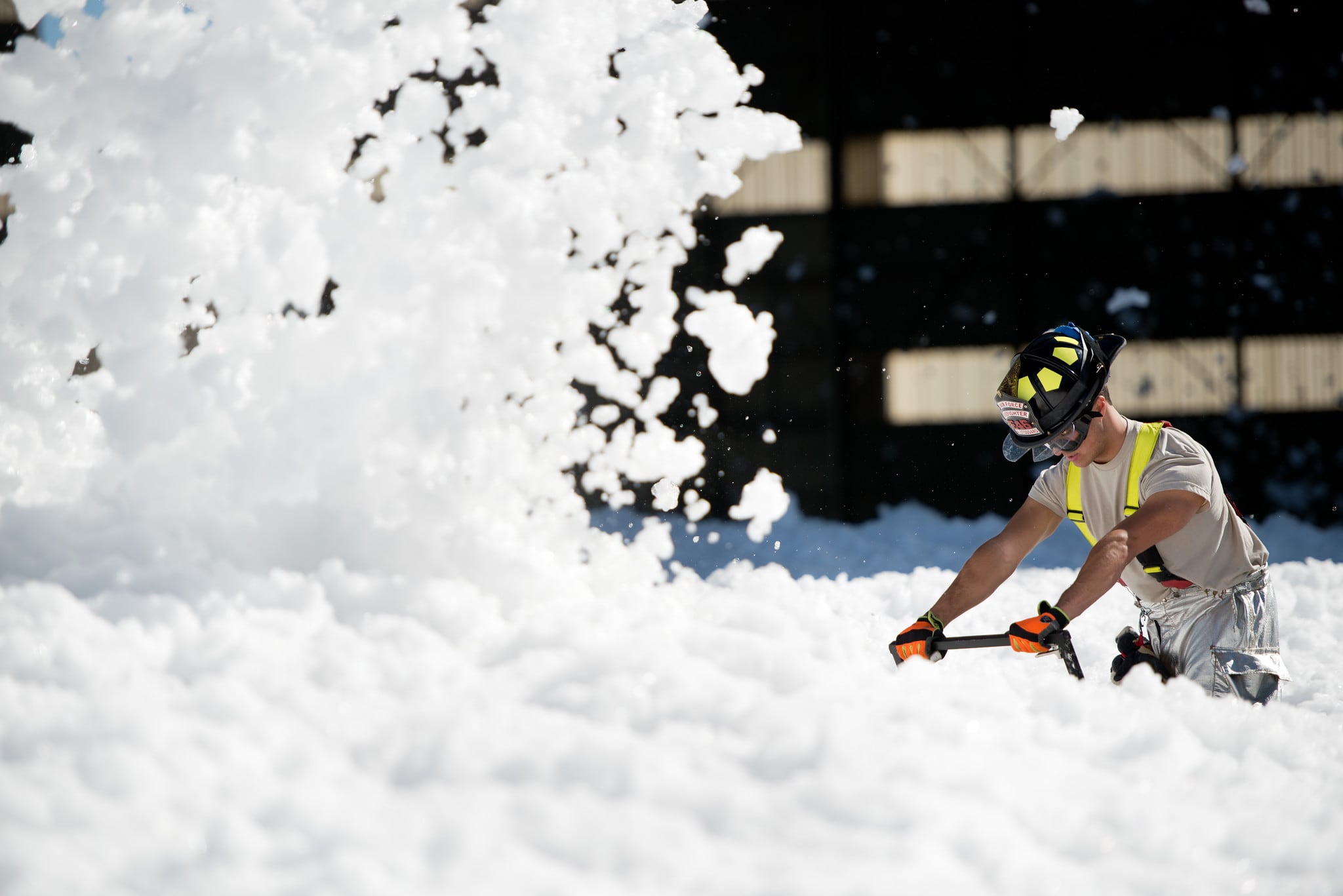Hundreds of military installations show unsafe levels of toxic “forever chemicals” in their ground water, including a handful along the Chesapeake Bay, according to a study released Wednesday by the Environmental Working Group.
Using Defense Department records, researchers noted that there are eight bases with between 0.8 and 2.2 million parts per trillion of per- and polyfluoroalkyl substances, compared to the Environmental Protection Agency’s recommended limit of 70 parts per trillion.
“The chemicals have seeped into the bay, affecting its wildlife, and potentially harming residents’ food supply and livelihoods,” according to the report. “The contamination underscores the need for swift DoD cleanup.”
Affected sites include Aberdeen Proving Ground, Naval Research Laboratory Blossom Point, Martin State Airport Air National Guard Base, Naval Air Station Patuxent River, the Naval Academy and Naval Research Laboratory Chesapeake Bay, Maryland, as well as Joint Base Langley-Eustis and Naval Weapons Station Yorktown, Virginia.
Five of those installations show PFAS contamination above 70 parts per trillion.
Langley, home to Air Force fighter squadrons, reported the highest contamination rate, at more than 2.2 million parts per trillion. PFAS contamination in the military is largely attributed to the used of aqueous film-forming foam, a flame retardant used to put out aircraft and vehicle fires.
All of the sites, save Aberdeen and Blossom Point, are in some stage of remediation, whether it’s investigations or assessments.
RELATED

“The records also show that PFAS may be present in the groundwater at several other bases near the Chesapeake Bay where DOD has not tested to confirm the presence of PFAS,” according to the report.
Those include Joint Expeditionary Base Little Creek-Fort Story, Fort Monroe, Cheatham Annex and Naval Fuel Depot Craney Island, Virginia, as well as Weide Army Heliport, Navy Recreation Center Solomons and Naval Training Center Bainbridge, Maryland.
Despite DoD efforts to filter drinking water on bases, Chesapeake contamination offers another risk, according to the EWG: seafood.
A 2020 study found PFAS, to the tune of thousands of parts per trillion, in rockfish, oysters and crabs caught in southern Maryland. The Food and Drug Administration does not have a safe consumption limit for PFAS in food.
Though DoD has known about contamination due to fire-fighting foam, efforts to clean it up have come in fits and starts. The services no longer use the foam in training, vastly cutting down exposure, but there have been no major efforts to clean up groundwater around bases beyond filtering what residents drink.
While advocates push for stronger EPA regulations, and legislation that would fund federal clean-up of military bases, a non-toxic firefighting foam still doesn’t exist.
“The rate of progress is defined primarily by the rules that govern our physical world. Physics, chemistry, science,” Richard Kidd, the deputy assistant defense secretary for environment and energy resilience told the House Appropriations Committee in May. “Based on what we know today — and known technology ― frankly, it will be years before we fully define the scope of the problem and with that definition can reflect it in our budget request, and after that, probably decades before cleanup is complete.”
Meghann Myers is the Pentagon bureau chief at Military Times. She covers operations, policy, personnel, leadership and other issues affecting service members.





